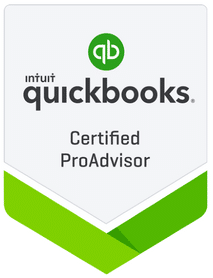- Patrick Roney
- (877) 503-8607
Follow Us :
Follow Us :
Proledge
March 2, 2012

Online banking for small businesses has long been mainstream . Small business owners who don’t use a browser to check on their bank accounts will soon be put on the endangered species list. However, the percentage of small business owners who interface their QuickBooks file with online banking is still surprisingly small. The technology has existed for over twenty years and by all accounts (no pun intended) is working reasonably well. So why aren’t all QuickBooks files out there connected to their bank? The blame falls for the most part on the banks.
Once upon a time (in the nineties), the few banks who allowed you to interface Quicken and QuickBooks with your accounts were bragging about it and using it as a marketing differentiation. Nowadays, every bank offers it, so interfacing with QuickBooks online banking has become more of a cost center to them. Why encourage their clients to connect and trigger more tech support calls? When was the last time you heard a bank advertise: “Switch your accounts to us. You can connect QuickBooks to them!”?
There are two technologies used to connect QuickBooks to your bank: WebConnect and DirectConnect.
DirectConnect should have become the standard a long time ago and WebConnect should have been discontinued, but for some reasons, most banks have decided to keep WebConnect free and to charge a premium for DirectConnect (often $9.95 per month). As a result, WebConnect remains the predominant technique used to interface. Since it is so clunky, it is no surprise that adoption is lagging.
This is compounded by the recent growth of small community banks and credit unions. These banks are too small to afford the development of their own online banking technology. Instead they purchase their online banking systems turnkey from back-end providers and rebrand them. These turnkey solutions are often not very sophisticated and the banks who buy them don’t know how to support them too well. In many cases, they don’t even offer DirectConnect at all. As a result, we are seeing much greater adoption of WebConnect and DirectConnect with the larger banks than with the smaller banks and credit unions.
This being said, I am not advocating for the fact that every small business should jump onto the DirectConnect bandwagon. The misconception is that interfacing QuickBooks to online banking is a guaranty to save you time. It is true for most businesses, but not for all. Here are instances when you might want to think twice before connecting your QuickBooks file with online banking:
However, if you have lots of transactions, connecting QuickBooks to online banking can save you time and money. When setup correctly, it is very efficient. Just make sure to be ready to fork out the small premium the bank will ask you for DirectConnect. WebConnect is a thing of the past.


Fill out the form below to sign up to our Blog Newsletter and we’ll drop you a line when new articles come up.
Bookkeepers.
Professional. Affordable.
ProLedge is a bookkeeping services firm.
Copyright © 2024 All rights reserved.
Hello. Can we help you?